Diaphragm Pump

What is a Diaphragm Pump?
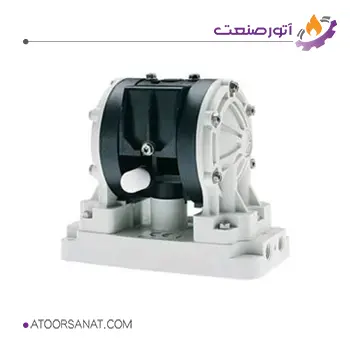
Features:
- Country of Origin: USA
- Maximum Pressure: 7 – 8.4 – 8.6 bar
- Body Material: Polypropylene – Acetal – PVDF – 316 Stainless Steel – Aluminum – Cast Iron
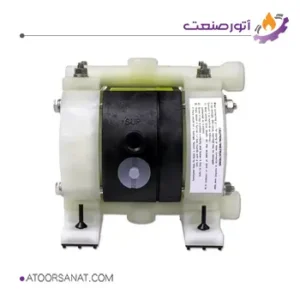
Features:
- Country of Origin: Japan
- Maximum Pressure: 7 bar
- Body Material: Aluminum, Steel, Polypropylene, Acetal, PVDF, Cast Iron
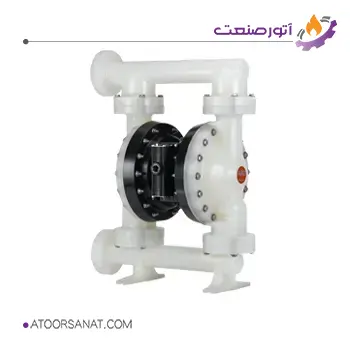
Features:
- Country of Origin: USA
- Pressure Range: 6.8 to 8.6 bar
- Body Material: Aluminum, Cast Iron, Steel, Hastelloy, Polypropylene, PVDF
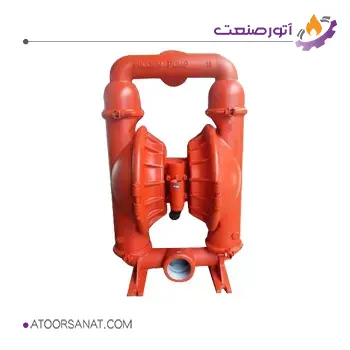
Features:
- Country of Origin: England
- Maximum Pressure: 8.6 bar
- Body Material: Aluminum, 316 Stainless Steel, Cast Iron
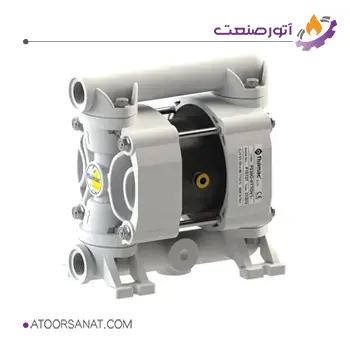
Features:
- Country of Origin: Italy
- Maximum Pressure: 8 bar
- Body Material: PVDF, PP, 304 Stainless Steel, 316 Stainless Steel, Aluminum
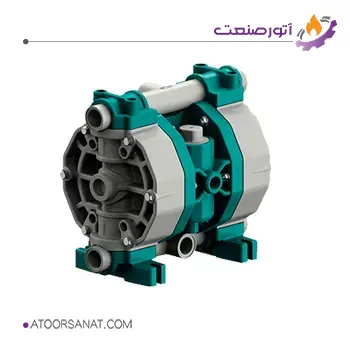
Features:
- Country of Origin: Italy
- Maximum Pressure: 8 bar
- Body Material: PVDF, PP, Steel, Aluminum
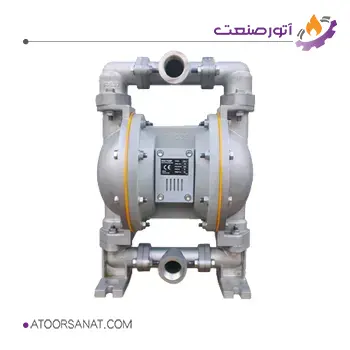
Features:
- Country of Origin: Turkey
- Maximum Pressure: 8 bar
- Body Material: Steel, Aluminum, PP, PVDF

Features:
- Country of Origin: Turkey
- Maximum Head: 70 meters
- Applications: For transferring salt water, solvents, resins, caustic, jam, etc.
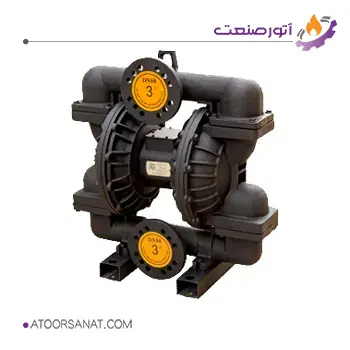
Features:
- Country of Origin: China
- Maximum Pressure: 7 bar
- Body Material: Aluminum, Steel, PVDF, PP, Cast Iron
Diaphragm pump function
The most common type of these pumps is the double-diaphragm pump, which consists of two chambers and two flexible diaphragms that reciprocate against each other. The diaphragms are connected to a shaft and act as the driving force for the fluid.
Compressed air from the compressor is directed to the back of diaphragm number one by an air distribution valve, pushing it away from the center. This reduces the volume of chamber one, increasing the fluid pressure and causing it to exit through the check valve and the pump. Simultaneously, the air behind diaphragm number two is pushed forward, increasing the volume of chamber two and drawing fluid into the pump. When the movement of diaphragm number one is complete, the airflow is changed from behind diaphragm number one to behind diaphragm number two by the air distribution valve.
Compressed air pushes diaphragm number two away from the center and moves diaphragm number one towards the center. In section two, the check valve moves and the fluid exits, while the opposite happens in section one. At the end of this process, the air distribution valve again transfers air to the back of diaphragm number one, and the cycle is complete. This process is very similar to the human breathing mechanism.
In addition to air, the driving force of the diaphragms in these types of pumps can be mechanical, hydraulic, or solenoid. In a mechanical diaphragm pump, the movement of the diaphragms is performed using a simple reciprocating mechanical connection. In the hydraulic type, a pressurized fluid with a piston in a cylinder moves the diaphragms. Solenoid diaphragm pumps have an electric motor that controls the solenoid magnet. When activated, the solenoid creates a magnetic force that interacts with a ferromagnetic metal part in the diaphragm, causing the diaphragm to flex.
Diaphragm pump components
Diaphragms, as the determining factor in the performance of diaphragm pumps during suction and pumping of fluids, must withstand significant stress. They must also be resistant to chemical corrosion and fluid temperatures. Therefore, their shape and material are of great importance. The shape of the diaphragm determines the flow rate and pressure of the pump, and efficiency and lifespan depend on its shape. The material of the diaphragms, like their shape, is of great importance. Depending on the application, they are made of various materials such as elastomers and plastics. Below, we have explained the components of a diaphragm pump and some examples of them.
Rubber diaphragms: These are made of rubber compounds with special additives to improve chemical properties. One of the materials used to make these diaphragms is NBR, which is used for pumping oil and petroleum-based fluids such as leaded gasoline, fuel oils, hydraulic oils, kerosene, etc.
Another material that has good resistance to acids, alkalis, and low temperatures is EPDM. Neoprene diaphragms are inexpensive have general applications, and are suitable for pumping water-based slurries. Viton is another type of rubber that is used in the manufacture of diaphragms for high-temperature operation. These diaphragms are used for pumping corrosive fluids.
Thermoplastic diaphragms: These are made of thermoplastic polymers. Polyurethane is one of the thermoplastic polymers and diaphragms made of this material have general applications. High durability and flexibility are the characteristics of these diaphragms. Hytrel is another suitable polymer for their manufacture in abrasive conditions.
Diaphragms made of Santoprene have high resistance to abrasion, stress, and acidic and alkaline properties of materials. Teflon diaphragms are also used for pumping acids and corrosive solvents.
PTFE diaphragms: Due to their high resistance to high temperatures and chemical and corrosive agents, this material is used in the manufacture of diaphragms.
The body and chamber of the diaphragm pump are made of various materials. The properties of the fluid, the amount of pressure, and the working environment are factors that must be considered when selecting the material for the pump. Cast iron has high tensile strength and is wear-resistant, making it suitable for high-pressure operation. Plastics are inexpensive and resistant to chemicals and corrosion. Stainless steels are resistant to corrosion and rust and have higher tensile strength than plastics, which is relevant to high pressures.
Other materials used in the manufacture of diaphragm pumps include brass, bronze, aluminum, ceramics, and nickel alloys.
Check valves in these pumps are available in three types: flap, ball, and poppet. Flap valves can pass large solid particles in the fluid are suitable for pumping slurries and are hung vertically. Ball valves vertically pass the flow and have general applications. Poppet valves are often loaded by a spring-loaded rod and can be installed in any direction.
Since many of these pumps are used for pumping abrasive and corrosive fluids, their valves must be made of alloyed and stainless steels and elastomers or have an elastomeric coating.

